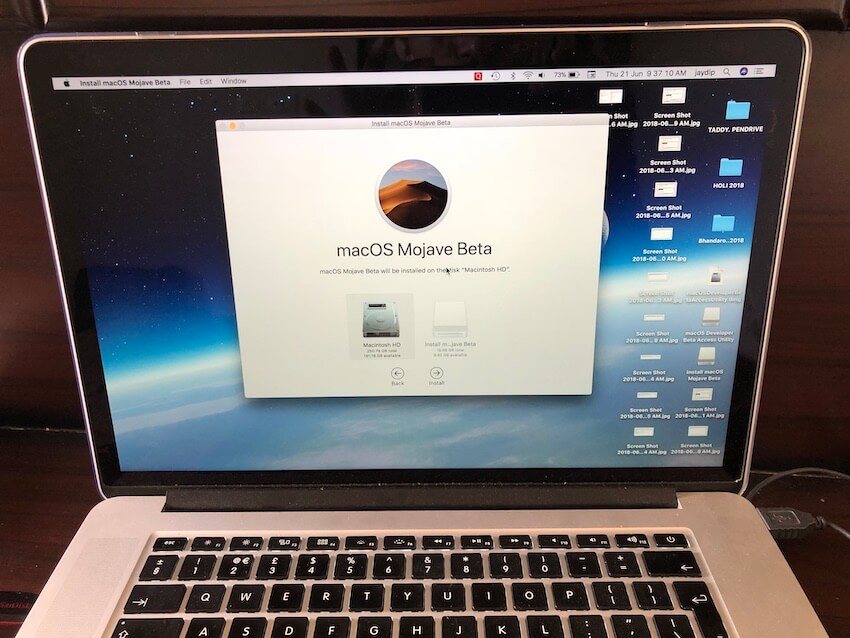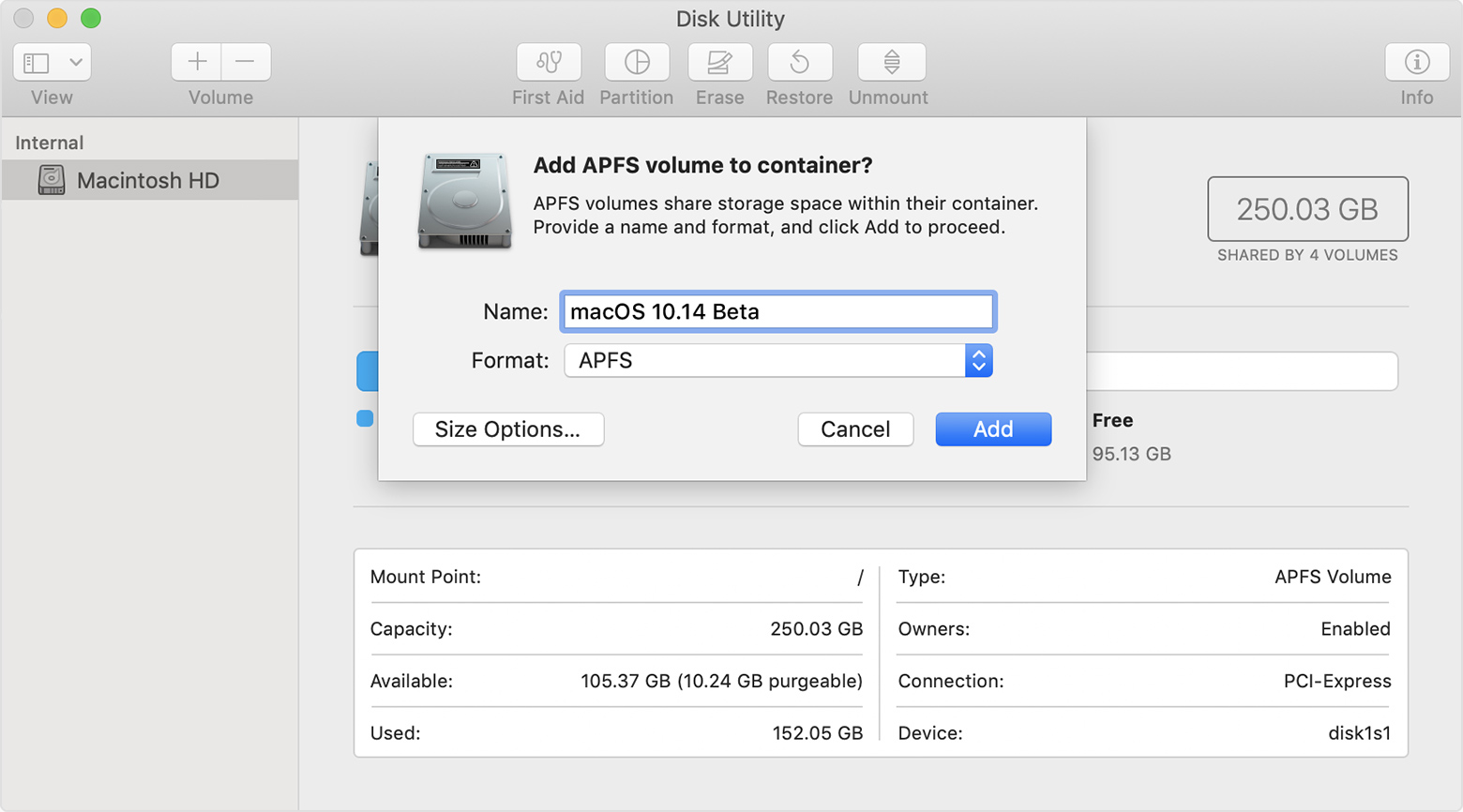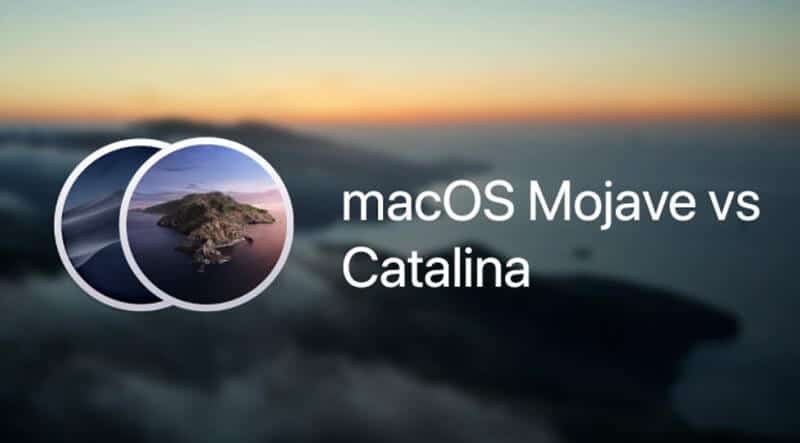If you have installed Big Sur, Catalina, Mojave or earlier versions, you may have to reinstall macOS for following reasons:
- Reinstall Macos Mojave From Catalina Az
- Reinstall Macos Mojave From Catalina
- Reinstall Macos Mojave From Catalina Os
Primary Steps to Wiping a Macintosh Hard Drive Running Catalina These are the main steps to wiping your data from the computer. First you’ll be removing your Apple ID, then wiping security settings like your fingerprint ID. Then you’ll erase the drive and reinstall macOS. Tags: apple beta program, disk utility, downgrade macOS, mac error, mac repair clinic, macOS Catalina, macos mojave, network adapter, reinstall Mojave Continue Reading Previous What to Do When You Are Unable to Create a New Folder in Mac’s Mail App. On an Intel-based Mac: Choose Apple menu Restart, then immediately press and hold Command-R. In the Recovery app window, select Disk Utility, then click Continue. In Disk Utility, select the volume you want to erase in the sidebar, then click Erase in the toolbar. Type a name for the volume in the Name field, click the Format pop-up menu.

- Reinstall When There is New macOS Version Available
Apple keeps working constantly to fix bugs, make performance tweaks, add new features or enhance coding. Therefore, doubtless, there will be new versions of macOS available to upgrade and reinstall.
- Your Mac is Running Slow
As we all know, for no specific reason, system reinstallation can magically solve a slow Mac in most cases.
- Your System Keeps Crashing or Works Improperly
When you continuously see error messages appear on your mac, or your programs randomly crash/freeze for no reason, like FaceTime won't work, Contacts or Calendar shows a delay or mess, blue teeth or WiFi won't connect…Then, you have a good reason to reinstall macOS.
- You are Going to Sell the Mac
In the case that you want to sell your mac, besides erasing all your personal data and traces on the mac, you will need to reinstall macOS as well.
It is not complicate to reinstall macOS Big Sur or Catalina, but if you want to reinstall macOS without losing data, there are 3 steps you must follow.
Recover Files after macOS Reinstall
- Recover data lost due to macOS reinstallation, upgrade, downgrade
- Recover data lost due to accident deletion, formatting, etc.
- Restore data from both internal and external storage device
- Recover videos, audios, images, documents, and other 200+ files
- 5 recovery modes to find files back easily
- High recovery rate
- Support Big Sur, Catalina, Mojave and earlier
3 Steps to Reinstall macOS Big Sur or Catalina without Losing Data
We all save tons of data on our Mac, so when we decide to reinstall macOS Big Sur/Catalina, the top concern always goes to “will I lost everything if I reinstall macOS”. In fact, reinstallation of macOS doesn’t necessarily cause lost data, it just create a new copy, your existing files and data saved in programs won't be altered or deleted. But just in case of bad luck, we need to do some work on BACKUP, this is crucial for macOS reinstallation without losing data.
Step 1. Prepare Your Mac for Reinstallation.
- Make enough room for Big Sur or Catalina reinstallation, at least 36GB, so the reinstallation process won't pause or stopped for insufficient space.
- Also, quit all apps or programs under work, so your Mac is fully geared to reinstall.
- Check drive conditions. Open Disk Utility and perform the Frist Aid on your hard drive where to reinstall the macOS to make sure your drive is in good condition for reinstallation.
Step 2. Backup All Your Files for macOS Install (Crucial)
Backup is an indispensable step involved in the macOS reinstallation, here are several options to backup your data.
Option One: Using Time Machine
- Go to Finder>Application, launch Time Machine and choose “Set Up Time Machine”.
- Click “Select Backup Disk” to choose an external hard drive to back up the files.
- Then Check the box before “Back Up Automatically”. Also, you can adjust the backup setting in menu “Options”.
If this is the first time you use Time Machine to backup, wait patiently for Time Machine to complete the backup, it will prompt the notification once finishes.
Option Two: Using Hard Drive
- Connect your hard drive to Mac.
- Open Finder to check if your hard drive is present under “Devices”.
- Create a new folder, copy and paste or directly move the items you want to save from Mac to this folder.
- Finally, eject your hard drive.
Option Three: Using iCloud Service (Backup Desk and Documents Folders)
- Go to Finder>System Preference, click on “iCloud” to bring up its main interface.
- Click the “Options” button for “iCloud”, and check the box before “Desktop and Documents Folders”, then click on “Done”.
Most of our mac users prefer to backup all files but apps. So, to save you from troubles of lost data due to macOS reinstallation, you are recommended to keep records of what apps you have installed, the account and password, also, you can take screenshots of the settings.
Step 3. Reinstall macOS Big Sur or Catalina without Losing Data.
Option #1: Reinstall macOS without Losing Data From Internet Recovery
- Click the Apple icon>Restart.
- Hold down the key combination: Command+R, you will see the Apple logo.
- Then choose “Reinstall macOS Big Sur” from utilities window and click “Continue”.
- Select your hard drive, click “Install” and wait for end of reinstallation.
Option #2 Reinstall macOS without Losing Data From USB
- Download the macOS Big Sur install from Mac App Store onto your Mac;
- Then connect the USB flash drive to your Mac;
- Open Disk Utility program on your Mac, choose the USB flash drive and click Erase to have a clean drive for the reinstallation;
- Open Terminal, copy and paste sudo /Applications/Install macOS Big Sur.app/Contents/Resources/createinstallmedia;
- Then add the volume of usb flash drive: --volume /Volumes/MyVolume, replace MyVolume with your usb flash drive name, mine is Untitled;
- Press Enter, input password and wait for the process to finish;
- Quit Terminal, restart your Mac, hold Command+R when starting Mac until you see the apple logo;
- Login into your Mac with password, go to the menu bar>Utilities>Startup Security Utility, enter password again;
- Choose Medium Security under Secure Boot and allow booting from external media;
- Restart your Mac, in the same time, hold the Option key;
- Choose Install macOS Big Sur, click Next and input password, choose Install macOS, continue to finish mac reinstallation from usb.
Mac Won't Turn on after Update to macOS Big Sur?
Here are 10 solutions to fix 'Mac won't turn on after update to macOS Big Sur, Catalina or other versions'.
READ MORE >
What if You Lost Data After macOS Big Sur Reinstallation?
However, losing data after reinstallation still happens. It may result from a interrupted installation (power-off/poor internet connection), corrupt setup, insufficient space or improper actions. Then, what to do if you lost data after reinstallation? Here are 2 methods.
Method 1: Use Cisdem Data Recovery to Recover Data
In the case you didn’t do backup before reinstallation, you will need a dedication data recovery program to find the lost data for you.
Here we recommend Cisdem Data Recovery, a powerful mac program allowing users to recover lost/deleted/corrupted/formatted files from a wide range of external or internal storage devices, no matter the file is lost due to human errors, power-off, reinstallation, upgrade, virus attack or disk crash.
Main Features of Cisdem Data Recovery
- Recover files lost due to OS reinstallation, upgrade, downgrade;
- Recover deleted, formatted and lost files;
- Restore files from internal and external hard drive, USB, SD Card, flash drive, etc.;
- Restore videos, audios, images, documents, archives, 200+ types;
- 5 recovery modes: Basic, External Drive, Formatted Drive, Trash, Advanced;
- Preview files before recovery;
- Fast scanning and recovery;
Steps to Recover Lost Data after MacOS Reinstallation
- Download and install Cisdem Data Recovery on Mac.
Free Download - Choose a Recovery Mode according to your need.
If you want an efficient recovery, choose “Basic Data Recovery”, if you want to recover files with a higher success rate, try “Advanced Data Recovery”. - Select the hard drive where you originally stored the files on mac. Then click “Scan”.
- Check and preview files found by Cisdem Data Recovery.
- Select files to recover.
Check the box before files that you want to recover, then click “Recover” to find back the lost data caused by reinstallation.
Method 2: Use Time Machine to Recover Data with Backup
If you have backed up your files on mac, you can use Time Machine to restore the lost data.
- Step1. Go to Finder>Applications>Time Machine, launch it and choose “Enter Time Machine”.
- Step2. In the popped-up window, use the arrows and timeline to browse the local snapshots and backups.
- Step3. Find the deleted files, then click “Restore” to recover the lost data caused by reinstallation.
Conclusion
The key to reinstall mac OS Big Sur, Catalina or Mojave without losing data is the backup, since no one can guarantee all data will be perfectly maintained after macOS reinstallation. However, if we unfortunately lost files after macOS reinstallation, Time Machine or Cisdem Data Recovery is helpful to recover them back.
So, do you have any other tips to reinstall macOS without losing data? Please share with more of our mac users.
Downgrade Catalina to Mojave
If you’ve installed macOS Catalina and run into problems with some of your apps, or you’ve just decided that you don’t like it as much as Mojave, the good news is that you can downgrade back to the previous version of macOS. The bad news is that it’s a lengthy process with several steps. Read on to find out how to do it.
1. Back up your Mac
You should have backed up your Mac before you upgraded to Catalina, as you should before you perform any major upgrade or make any significant change to your Mac. However, the files you’ve been working on since you upgraded won’t be up to date on that backup. So, you should copy those files to an external disk, or a cloud storage service like Dropbox or iCloud Drive so you can retrieve them easily when you downgrade. We’re going to completely erase your Mac’s startup disk, so it’s important to copy anything you need now.
Before you backup, however, you should take steps to remove the junk and clutter from your Mac. There’s no point in backing up all the clutter along with the files you really need. To do that, I recommend CleanMyMac X. It’s the easiest way to clear out the clutter on your Mac. Here are just a few things it can do:
- Delete years worth of system junk
- Find hidden apps and folders
- Neutralize Mac-specific malware, like key loggers
- Manage hung apps and heavy CPU consumers
- Update all your software to the latest-supported versions


As you can see, CleanMyMac X does a lot more than just clear out junk files before you backup your Mac. It’s well-worth keeping it on your Mac and using regularly to keep your Mac running smoothly.
2. Save your passwords
When you downgrade mac OS Catalina, you’ll delete everything from your hard drive, including licence keys and settings. So, in addition to making sure you copy all the files that have changed since you last backed up, you should make a note of those. If you use a password manager that syncs with other devices and allows you to store licence codes and encrypted notes, you could use that. If not, any app that allows you to sync encrypted notes will do. Or you can use Apple’s Notes app. It’s also a good idea to take screen grabs of settings to make it easier to restore them later. Remember to copy the grabs to a cloud storage service or an external disk.
3. Create a bootable installer of macOS Mojave
Note, you can skip this step if your Mac shipped with macOS Mojave or if you made a backup with Time Machine before you upgraded to Catalina.
- If you’re reading this before macOS Catalina ships, you can go to the App Store and search for Mojave, then download it. If it tries to install when it’s finished downloading, quite the installer.
- If you’re reading this after Catalina ships, you can download Mojave here, but only on a Mac that’s not already running Mojave. When you click that link, Software Update will launch and start to download Mojave. When it’s finished, quit Software Update.
- Grab a USB stick with 16GB capacity or an external hard drive or SSD and plug it in to your Mac.
- Launch Disk Utilities and Erase the Drive or USB stick, formatting it as Mac OS Extended (Journaled) and selecting GUID partition map if a selection is available.
- The easiest way to create a bootable installer is to use DiskMaker X. However, you can also do it in Terminal like this:
- Launch Terminal from Applications - Utilities
- Type:
sudo /Applications/Install macOS Mojave.app/Contents/Resources/createinstallmedia --volume /Volumes/Untitledwhere ‘Untitled’ is the name of your USB stick or external hard drive - Press Return and wait for the word Done to appear in Terminal.
Whichever method you used, you should now have a bootable macOS Mojave installer. Keep it safe.
4. Uninstall macOS Catalina
- Make sure your Mac is connected to the internet.
- Click on the Apple menu and choose Restart.
- Hold down Command+R to boot into Recovery mode.
- Choose Disk Utility in the macOS Utilities window
- Select your startup disk
- Choose Erase
- Quit Disk Utility
How to downgrade Catalina to Mojave if your Mac shipped with Mojave
- Once you’ve erased your startup disk and quit Disk Utility as described above, choose Reinstall macOS from macOS Utilities.
- Press Continue.
How to rollback from Catalina using a Time Machine backup
If you backed up your Mac with Time Machine before you installed Catalina, you don’t need to create a bootable installer – you can just reinstall Mojave from your Time Machine backup. Make sure it’s plugged in if it’s an external disk. If it’s a network disk, make sure you’re connected to the network.
- Once you’ve erased your start up disk as described above, choose Restore from Time Machine backup in the macOS Utilities window.
- If your backup is on an external disk, select it. If it’s on a network disk, select it and choose Connect to Remote Disk.
- Type in your username and password for the remote disk if necessary.
- Select the data and time of the backup you want to restore from.
- Follow the onscreen instructions.
5. Install Mojave using a bootable installer
If you have a Mac that didn’t ship with Mojave and you don’t use Time Machine to backup, you’ll need to reinstall Mojave from the bootable installer we created earlier.
- Plug in the installer disk.
- Go to the Apple menu and choose restart, then hold down the Option key.
- Mojave will start installing on your Mac.
- When it’s finished, your Mac will restart and the Setup Assistant will appear
- Follow the steps in the SetUp Assistant to set up Mojave
Restore your settings
If you have reinstalled Mojave from a bootable disk, rather than a Time Machine backup, you will need to reinstall applications and copy documents across from your backup. That’s where those notes and screen shots you made earlier come in handy!
Once you’ve restored your settings and reinstalled all the apps you need, your Mac is ready to use again, running Mojave instead of Catalina.
Tip: If you want to roll back to an earlier version of macOS than Mojave, you can. To reinstall the OS your Mac shipped with, use the method in ‘How to downgrade if your Mac shipped with Mojave’. If you want to roll back to a version of macOS newer than the one your Mac shipped with but older than Mojave, you can download Sierra and earlier versions from the Mac App Store. Then follow from Step 3 in ‘Create a bootable installer of Mojave’.
My Mac is still underperforming, what to do?
Reinstall Macos Mojave From Catalina Az
You thought that reverting to macOS Mojave would get your Mac back to norm. But if it didn’t and you still experiencing sudden freeze-ups and glitches, full disk cleanup is your answer. Probably there are too many conflicting system junk files on your drive that you need to plow through.
You don’t need a regular disk cleanup app — most of them are scam — but this tool, CleanMyMac X, is notarized by Apple, and can really do helpful optimizations on your Mac.
- Download the free edition here
- Go to Maintenance tab
Reinstall Macos Mojave From Catalina
Now you can perform some of the tasks suggested by the app, like running Maintenance Scripts. Also, check the System Junk tab and remove all the useless files it recommends you to delete.
Reinstall Macos Mojave From Catalina Os
As you can see, it is possible to uninstall Catalina if you decide you don’t want to continue using it. It’s essential, however, that you backup your Mac before you upgrade. And remember, before you backup, clear out the clutter with CleanMyMac X. That way you won’t use precious space on your backup drive copying over junk files.